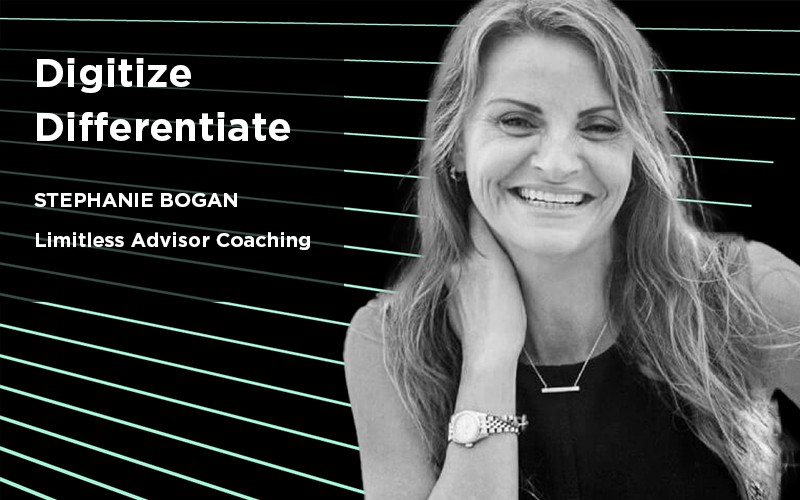How to Cultivate Trust in the Advisor-Client Relationship
When clients are on the hunt for a financial advisor, they’re seeking more than financial expertise. While it’s important to “know your stuff,” consumers want to work with an advisor they can trust. Yet many advisors focus on pushing their credntials and come up short on building emotional connections clients. If you’re fretting about stagnant organic growth, working on your trusted advisor status could be a game changer for you.
Ready to give it a go? We provide five tips for cultivating trust in the article below.
Key Takeaways:
- The key to professional success is the ability to earn the trust and confidence of clients.
- Risk taking plays an important role in building trust.
- Having a highly differentiated, personalized and emotionally connected experience is what clients want most from advisors.
- Firms that focus on solving client problems average 25%+ organic growth, compared to 5-7% for firms that do not. (Nitrogen 2023 Firm Growth Survey)
- When firms focus on solving client problems, conversion rates average 77% compared to 33% for those that do not. (Herbers & Co. 2023 Firm Study)
- One of the easiest ways to build trust is by being reliable.
Now, the concept of the trusted advisor isn’t a new one, but it hasn’t been making headlines like it used to—which is unfortunate. That’s why on a recent episode of The Breakthrough Advisor Podcast, Simplicity InsurMark Virtual CMO Jack Martin decided to go directly to the source of the trusted advisor revolution: Charles Green. More than 20 years ago, Green, founder of Trusted Advisor Associates, co-authored the book The Trusted Advisor along with David Maister and Robert Galford.
What is a trusted advisor?
During the podcast, Martin posed this question to Green who gives regular talks about the principles of successful advisorship. Says Green, “I think you break it into two parts, the trusted part and the advisor part. I think of trust as a noun. Trust describes a form of relationship like love or friendship or fear. It’s the result of interactions between two parties, one of whom does the trusting and the other of whom is trusted.”
By the way, the key to professional success according to Green, Galford and Maister’s book is the ability to earn the trust and confidence of clients. In the advisor-client relationship, trust is also a two-way street that involves risk taking.
“You have a trustor and a trustee. And the roles go back and forth and reciprocate. And anytime you’re in the role of trustor, the key issue is risk taking, because to trust something is risky. And the key role on the other side, the trustee, is to be trustworthy,” Green says.
Clients want to have an emotional connection with their advisors
While experience and credentials are important (the “advisor” part of the trusted advisor equation), trust is a component that plays an integral role in building enduring advisor-client relationships. According to Green, all of the academic models he’s seen on trust—including the trust equation detailed in The Trusted Advisor—tend to identify two broad areas.
“One of them is the technical expertise area. And the other one is the more squishy, soft, emotional, interior gut feel or instinct area. I think financial planners have tended to overemphasize the rational, behavioral, quantitative components over the years and under emphasize the emotional components,” Green says.
Adds Martin, “As advisors, we have defined our value proposition around our credentials, our longevity, our process. If I’ve read that on one advisor website, I’ve read it on a thousand. We don’t have a lot of differentiation. Now we’re discovering that clients want to go beyond that. What consumers want from their advisor at the very top of their hierarchy of needs is a highly differentiated, personalized and emotionally connected experience.”
These are the types of relationships where trust is built over time. Where advisors get to know their clients, understand who they are and what their needs are and where they work collaboratively to solve the client’s problems. These are relationships where advisors provide value for the purpose of making life better for the client, not for the purpose of getting paid.
Learn why a collaborative approach is key to landing and retaining Gen X and Gen Z clients in our recent post: Stop Asking for Referrals. Become Referrable Instead.
Advisors struggle with client acquisition but few know how to conquer it
During the podcast, Martin discussed what advisors’ top concerns are today and why they need to do something different. “If you survey advisors today, they’ll say their number one problem is client acquisition. But when you ask them whether they have a plan for client acquisition, seventy five percent say, ‘No.’
“If you’re going to build a model for growth, you’ve got to incorporate this notion of trust. You’ve got to incorporate this notion of emotion because that’s what really differentiates you from the other 15,000 investment advisors who are in the business. What we’ve learned is differentiation isn’t about what I do, it’s about the client. So, it’s really about that emotional connection.”
Five tips for cultivating trust in the advisor-client relationship
Tip No. 1: Get really good at listening.
It’s no secret. Listening skills are critical for financial advisors. Green believes most advisors tend to do a good job at listening to extract information, refine hypotheses and develop follow-up questions but they need hone their listening skills so their clients feel heard. Taking listening classes can help.
Says Green, “I’d suggest a different kind of listening. Listening where the goal is to make sure that the other person feels heard and understood and appreciated for whatever they say. And you do that in some subtle ways. You do it by leaning in a little bit. You do it by waiting a half second longer before you respond. You do it by, for example, ‘Wow.’ is a full sentence if you say it right. So is ‘Ouch.’ So, it’s kind of like learning the language of empathy, if you will.”
Martin also recommends downloading a note taking app, so you can focus 100% on what the client is saying, instead of taking notes yourself. “I don’t have to worry about taking notes and capturing what’s going on. I can focus in on what the client is saying and understand that,” Martin explains.
Tip No. 2: Show your vulnerable side.
As previously noted, risk taking plays a key role in building trust but advisors tend to think about risk in terms of financial risk (alpha, beta risk profiles, risk aversion, etc.). In the realm of building trust, it’s more about taking the risk to show your true self … allowing yourself to be vulnerable.
Says Green, “The fastest way to make somebody feel more trusting is to trust them. One of the challenges for financial planners is to figure out ways in which we can trust our clients so that they in turn will feel more trusting. It’s reciprocity. Cellini talked about this years ago. If I trust you first, then you feel more comfortable trusting me.”
Adds Martin, “As advisors, if we expect our clients to be transparent with us, we need to be transparent with them, right? It’s this whole thing about values and about what’s important to me and what I value from a financial perspective, from a family perspective, and so on.”
Tip No. 3: Engage clients in conversations that evoke trust
Green brought up an interesting scenario he frequently shares with financial advisors during his talks. “Imagine that you’re a new client, you don’t know anything about financial planning, and you have to hire a financial planner, and you narrow it down to two.
“Both of them have great credentials, they’re CFPs, both of them have risk profiles and all this good stuff, but only one of them asks you a question like, ‘What does money mean to you and your family? What are you trying to do with it? What are your goals? What do you think about your kids? What do you want your legacy to be?”
Who do you think the client would choose? And how does an advisor get to the point where he or she can ask such personal questions? As Green says above, “The fastest way to make somebody feel more trusting is to trust them.” Advisors who have the courage to be transparent and vulnerable can have those conversations.
As Green explains, “If you can engage people in that kind of conversation, that leads to the emotional side of the trust. Advisors tend to be risk averse themselves. So, you get this fear -based dynamic going both ways. And the challenge is to knock that down and get real.”
Tip No. 4: Focus on solving client problems, not profits.
While it’s important to be a good businessperson (be organized, run your business efficiently, hire the right staff, etc.), the driving force for advisors should be to focus on client problems. According to Martin, “Firms that are focused on solving clients’ problems grow significantly faster than firms that focus on expressing their value proposition, and their conversion rates are much higher.”
Recent statistics support Martin’s point. Consider this:
- According to the Nitrogen 2023 Firm Growth Survey, organic growth for financial services firms averaged 5-7%, while hypergrowth firms, which focus on solving client problems, experienced 25%+ growth.
- Per the Herbers & Co. 2023 Firm Study, firms that focus on solving client problem have a conversion rate of 77% on average compared to 33% for those that do not
Adds Green, “Here’s the subtle but huge thing; It’s tempting to say you should develop trusted advisor relationships, so that you can make more money and be more successful and grow faster. And that’s, well, it’s true. But I would argue, you can’t be really client focused if your ultimate goal is your own wealth. It’s by relentlessly, religiously doing what the client needs. You just can’t make it your goal. It’s got to be a happy byproduct.”
Tip No. 5: Be reliable.
During the podcast, Green shared some insight on the trust equation, which he and his co-authors take a deep dive into in The Trusted Advisor. We’re including reliability on our list of tips here because it’s part of the trust equation and one of the easiest things advisors can do to build trust. (Check out the podcast and pick up the book for more trust equation insights.)
“The three components in the trust equation—credibility, reliability and intimacy—are all positive virtues. Reliability is also the easiest one in many ways to do. Just make a lot of promises and keep them. They don’t even have to be big promises. Just say, ‘This meeting’s going to last 32 minutes.’ And at 31:50, the meeting’s over. The client thinks, ‘Wow, that guy’s really dependable.’ It doesn’t really take much,” Green says.
Want more tips for building trust in the advisor-client relationship?
These five tips are a great place to start but Green and Martin share even more trust-building tips in the podcast. You can catch that episode (No. 67) and get more tips for building a successful advisory practice, here.
And if you’d like to learn about InsurMark and what our advisor development organization can do for you—like InsurMark’s Value Engineering Process—contact us at (800) 752-0207 or connect with us online to schedule a discovery call today.
As an ADO – Advisor Development Organization™, Simplicity InsurMark provides solutions to meet the ever-evolving needs of financial professionals with a mission to protect and enhance the financial security of every home in America.



